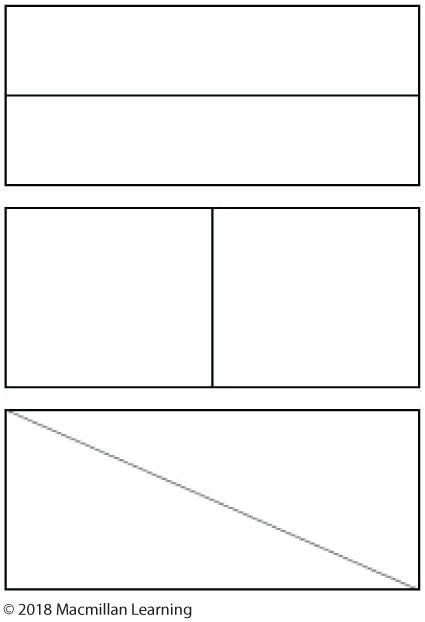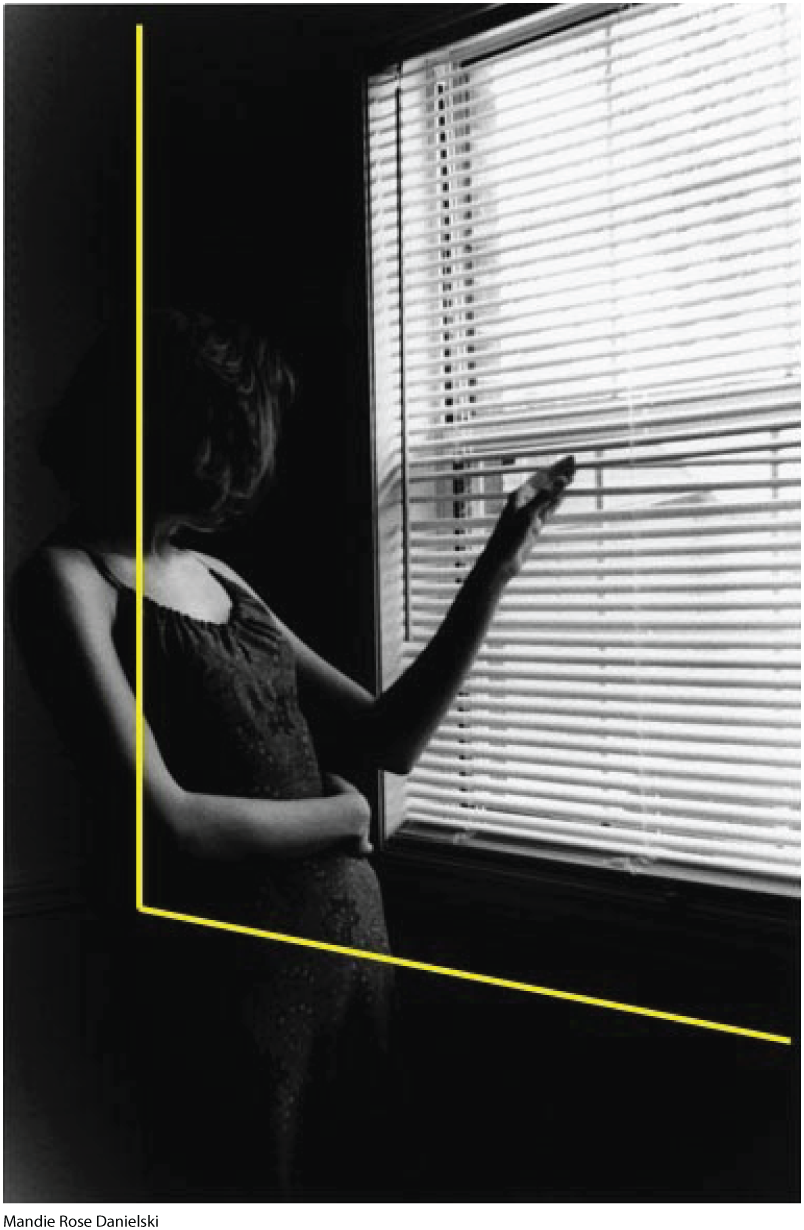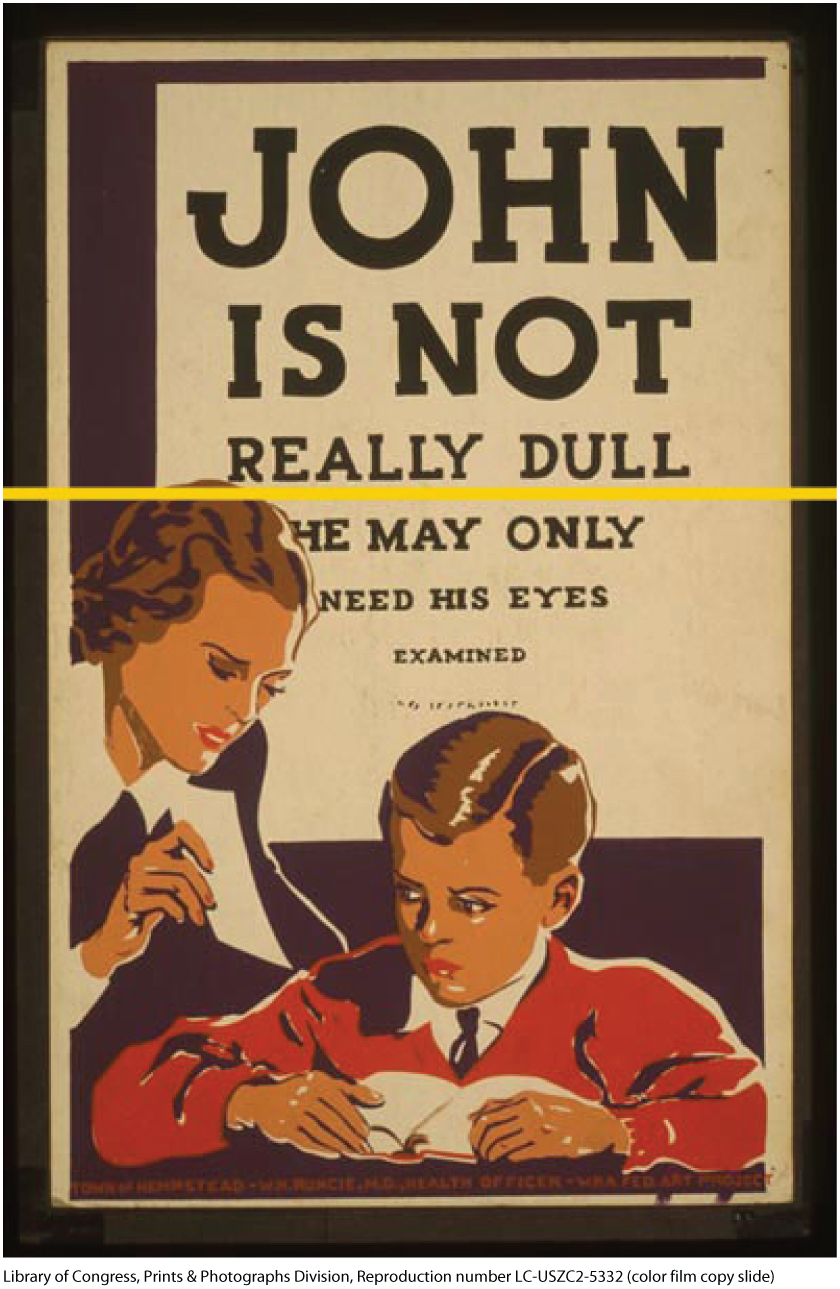Chapter 3. test
Introduction
Reading Visuals: Framing
© 2018 Macmillan Learning
Framing: Define

Framing: Define

If you look at the photo “Self in Waiting,” you will see several different frames that serve to group elements, direct the viewer’s attention, and otherwise communicate the photographer’s purpose.
Both the woman and the window are framed by the black walls. How does making note of this frame affect how you understand the photo?
Framing: Define

The woman’s arm in the foreground creates a horizontal frame with the bottom of the windowsill, thus emphasizing what we see above this line.
Framing: Define

The left edge of the windowsill creates a vertical frame, with the woman on the left side and the window on the right. How does this division draw your attention to the subjects of this photo?
Framing: Define

The woman’s left arm is a diagonal line against the vertical and horizontal lines of the window and her right arm. Where these three lines come together (the horizontal, the vertical, and the diagonal) we meet the crux of her elbow, and a focal point of the image.
Framing: Analyze



Let’s analyze three posters made by the WPA between 1936 and 1941 as part of Franklin Delano Roosevelt’s New Deal. Hundreds of posters were created to publicize health and safety, education, and community programs. All three have the same outside frame: the poster, a shape and size prescribed by its function.
Framing: Analyze

This image has a strong vertical split, slightly left of the middle, reinforced by the roughly inked black cartoon penguins facing off (rather than facing us, beak first). You also see a series of horizontal splits across each row of numbers and penguins, and two frames around the border, black and blue.
Framing: Analyze

This image has a strong horizontal split that divides two statements, one that poses a problem and the other that suggests a solution. In the top half, the text describes what’s wrong: “John/is not.” In the bottom half, the image and text suggest what might make things right.
Framing: Analyze

This image has a strong diagonal split from the top of the hammer down to the bright yellow piece of metal on the anvil, a yellow matched by the text. The framing here conveys a sense of directed purpose, immediacy, and action (a split second from now, that hammer will strike home).
Framing: Respond

Work through the following questions, which ask you to examine the framing techniques used in a photo, “Sara, 19,” by Lauren Greenfield.
Framing: Respond

Use the space below to answer the following questions.
Framing: Respond

Use the space below to answer the following questions.
Framing: Respond

Use the space below to answer the following questions.